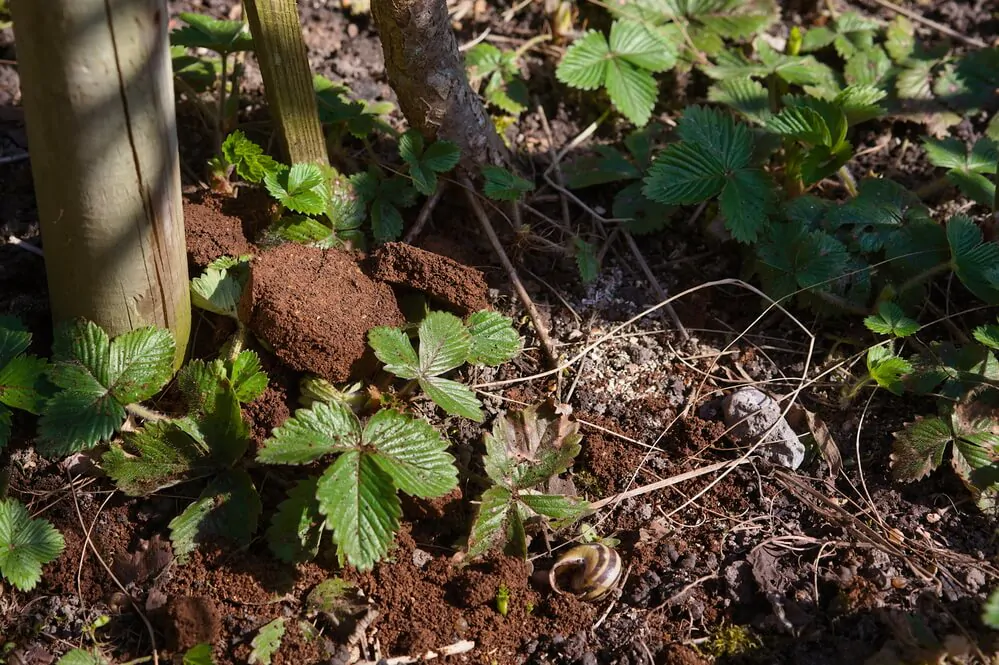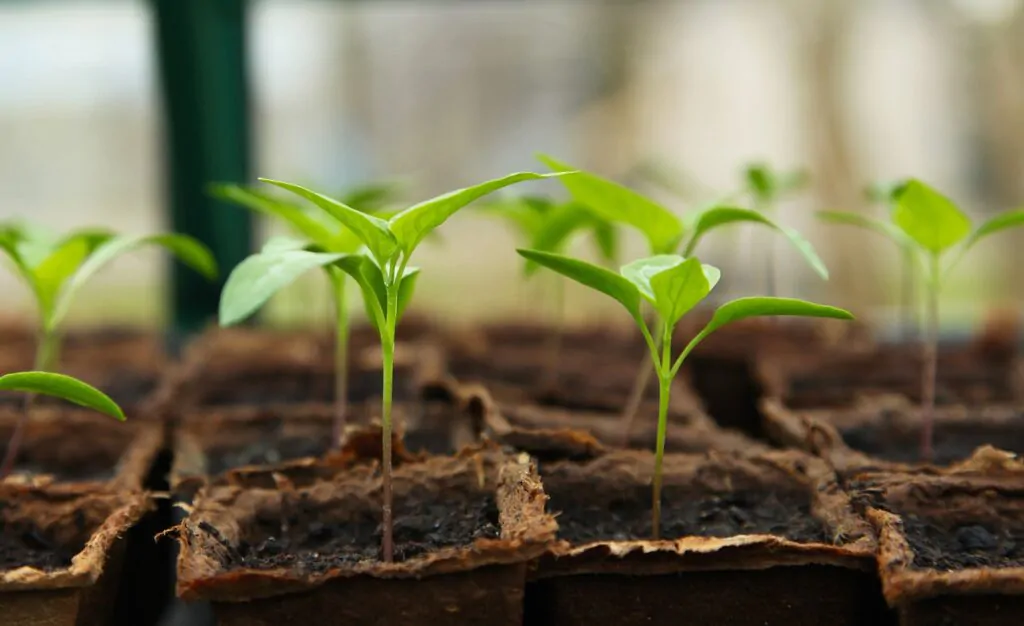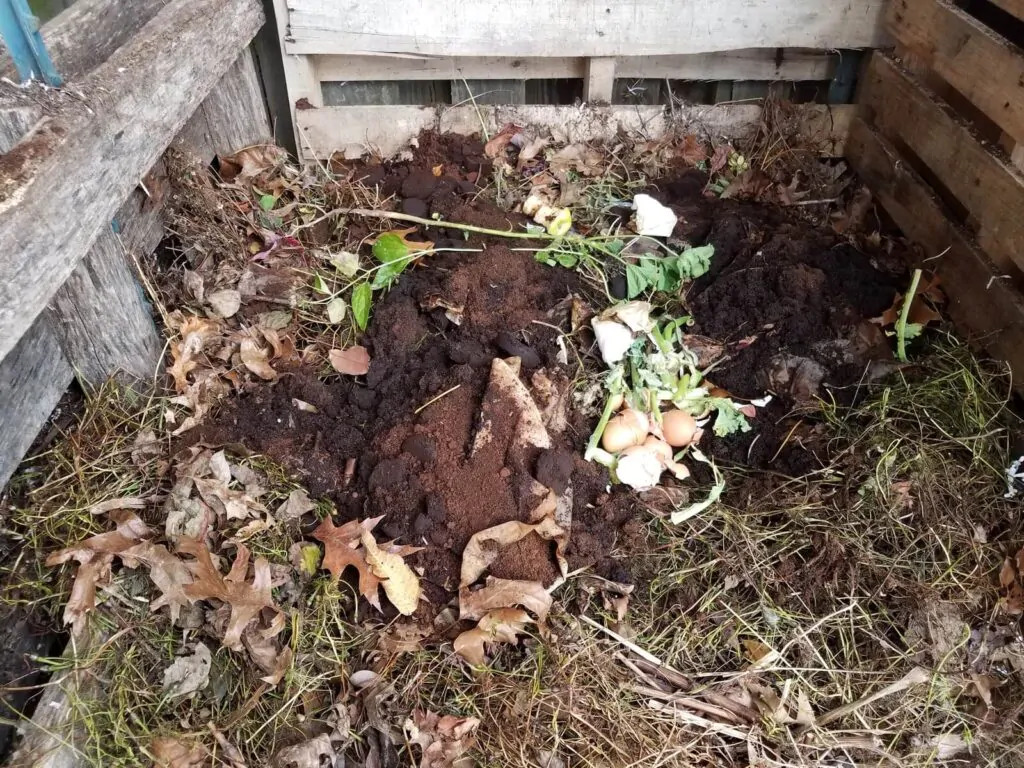Combining two loves — coffee and gardening — can be a match made in heaven. Here, we’ll go over everything you need to know to use coffee grounds as fertilizer.

When you make your morning cup of coffee, it can feel wasteful to toss the used coffee grounds in the trash. They smell amazing, and they’ve got to be good for something, right?
Adding coffee grounds to your composting routine or using them as fertilizer for your acid-loving plants is the perfect way to put used grounds to good use.
Using Coffee Grounds As Fertilizer: What Gardeners Need To Know

Using coffee grounds as fertilizer for your acid-loving plants is fast, simple, and can help cut down on the waste that comes out of your kitchen.
You don’t need to do anything fancy to prepare your used coffee grounds to be used as fertilizer. Simply be sure you’re applying the grounds to acid-loving plants (more on that in just a moment).
Let the coffee grounds cool, and then sprinkle them on top of the soil or mulch. Work the coffee grounds into the top layer of the soil.
Why Using Coffee Grounds As Fertilizer Works
There are a few different reasons why adding coffee grounds to the soil around your favorite plants can help them grow strong. Aeration, drainage, and water retention are all improved when organic matter — like coffee grounds — is added to the soil.
Worms are attracted to coffee grounds, and their presence can help improve the quality of the soil. Coffee grounds also support the lives of microorganisms that keep soil healthy. Coffee grounds can also act as mulch for your plants, blocking sunlight from soil and inhibiting the growth of weeds.

Many gardeners also find that coffee grounds seem to repel slugs and other pests that feed on garden plants. If you struggle with cats using your garden soil as a litterbox, you’ll be happy to know that felines tend to stay away from gardens that have been fertilized with coffee grounds.
Have a bit of black coffee left in your cup? Feel free to dilute it with water and add that to the grounds as well. Your acid-loving plants will thank you — as long as you don’t include any milk or sugar with their morning cup of coffee.
Acid-Loving Plants Love Used Coffee Grounds
If you’ve ever suffered from heartburn as the result of one too many cups of coffee, you know that coffee is acidic. Many plants love this quality of coffee, and it can positively affect their growth.
Acid-loving plants include:
- Azaleas
- Blueberries
- Camellias
- Daffodils
- Hydrangeas
- Mountain heather
- Nasturtiums
- Rhododendrons
While the above plants love a dose of fresh coffee grounds, be sure to keep coffee away from tomatoes. These plants don’t tend to do well with the addition of coffee grounds to the soil.
Not sure whether your plants are a good fit for an acidic fertilizer? A quick stop at your local garden shop can provide you with the information you need on the perfect home-created fertilizer for your garden plants.
If you find that supposedly acid-loving plants aren’t responding well to coffee grounds as fertilizer, you may want to consider giving them decaffeinated coffee grounds instead. This way, they still get the benefits of acidic soil without caffeine, which seems to cause some plants to struggle to thrive.
Coffee Grounds And Composting

If you’re still struggling to find a way to use up your leftover coffee grounds, adding them to your compost pile can help get rid of grounds in a way that’s good for the environment. Many coffee filters are compostable as well.
The Final Word On How To Use Coffee Grounds As Fertilizer
Using coffee grounds as fertilizer in your garden is super easy. Simply let your morning coffee grounds cool, sprinkle them over the soil surrounding the pants you want to fertilize, and lighting mix the grounds with the top layer of soil.
Be sure that you’re only using your coffee grounds to fertilize acid-loving plants. If you find that your plants aren’t responding well to the coffee grounds, try using decaffeinated coffee grounds instead.
FAQs On How To Use Coffee Grounds As Fertilizer
Which plants like used coffee grounds?
Acid-loving plants include azaleas, blueberries, camellias, daffodils, hydrangeas, mountain heather, nasturtiums, and rhododendrons.
Which plants do not like coffee grounds?
Tomatoes, Black-eyed Susans, daylilies, lavender, yarrow, kiwi, forsythia, and horse chestnut trees all prefer alkaline soil over acidic soil.

